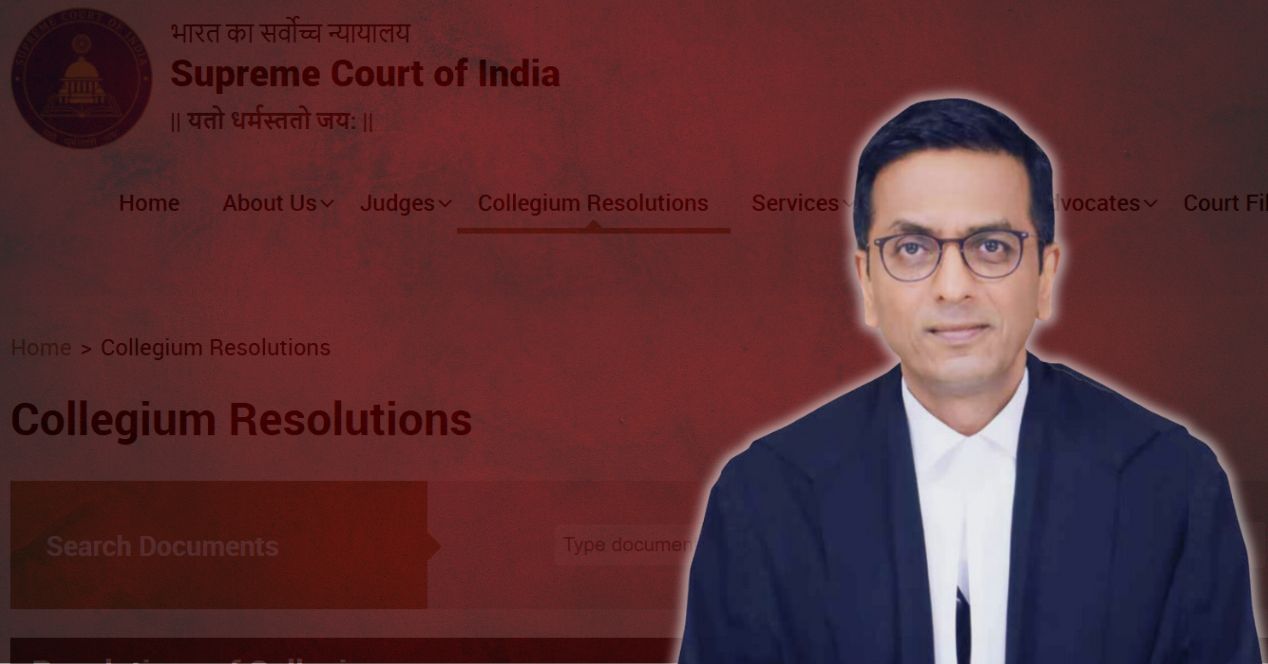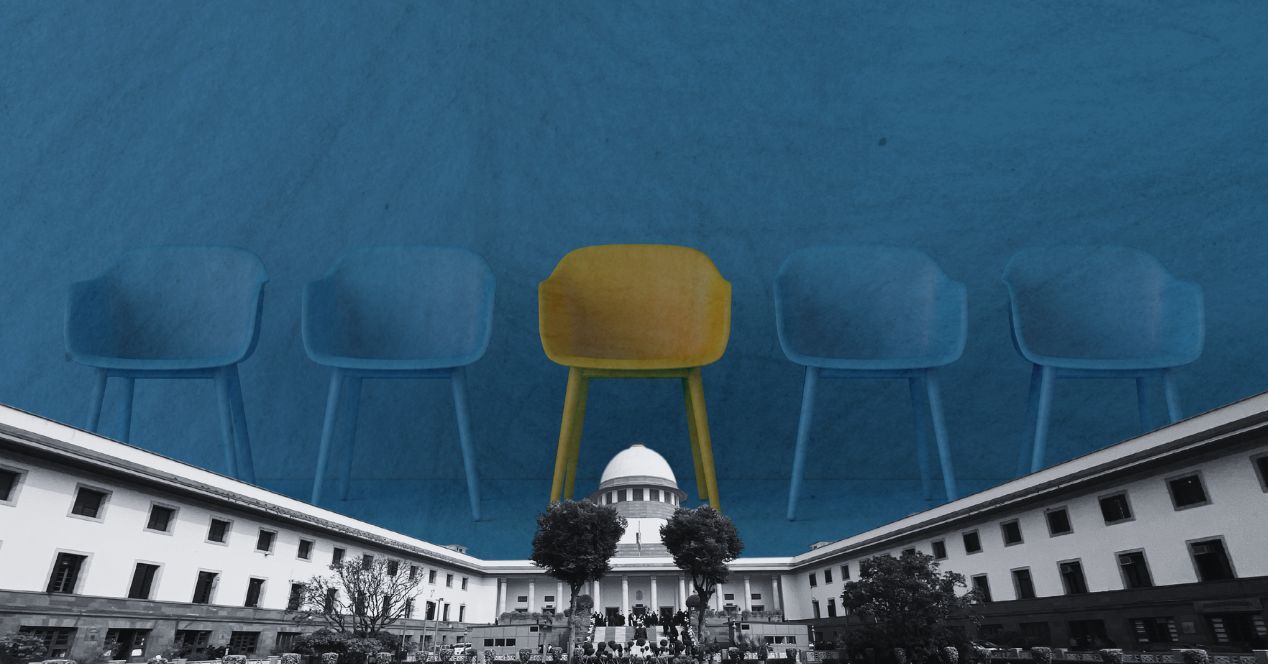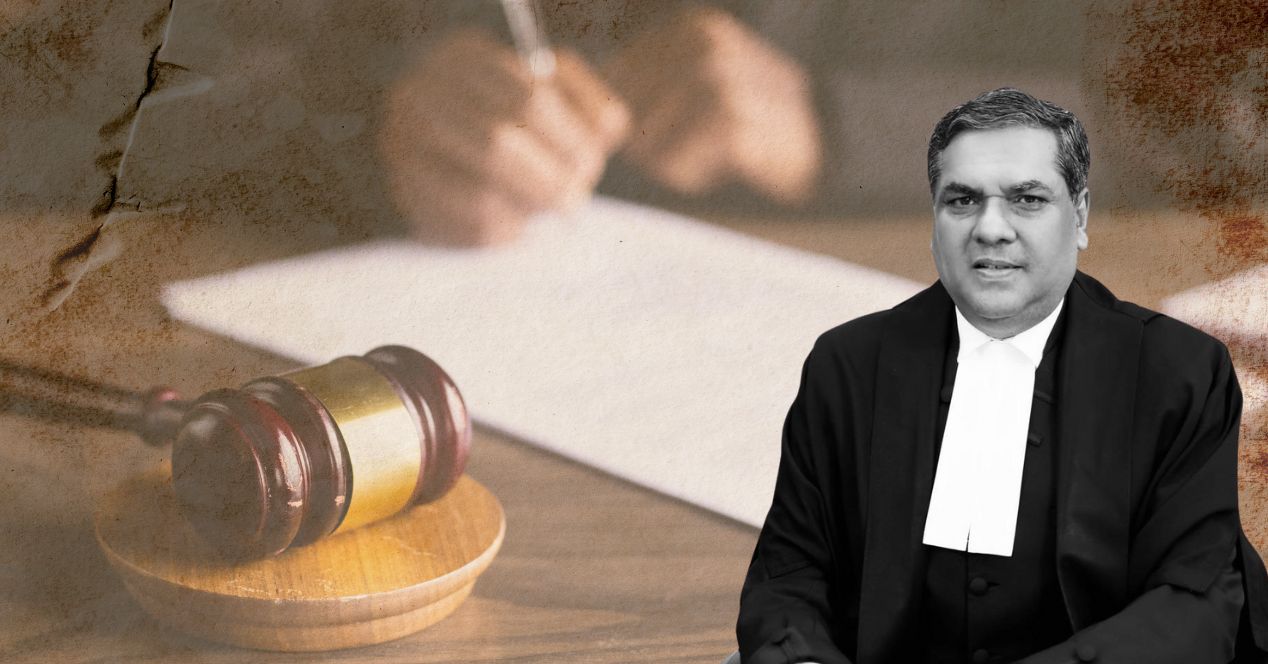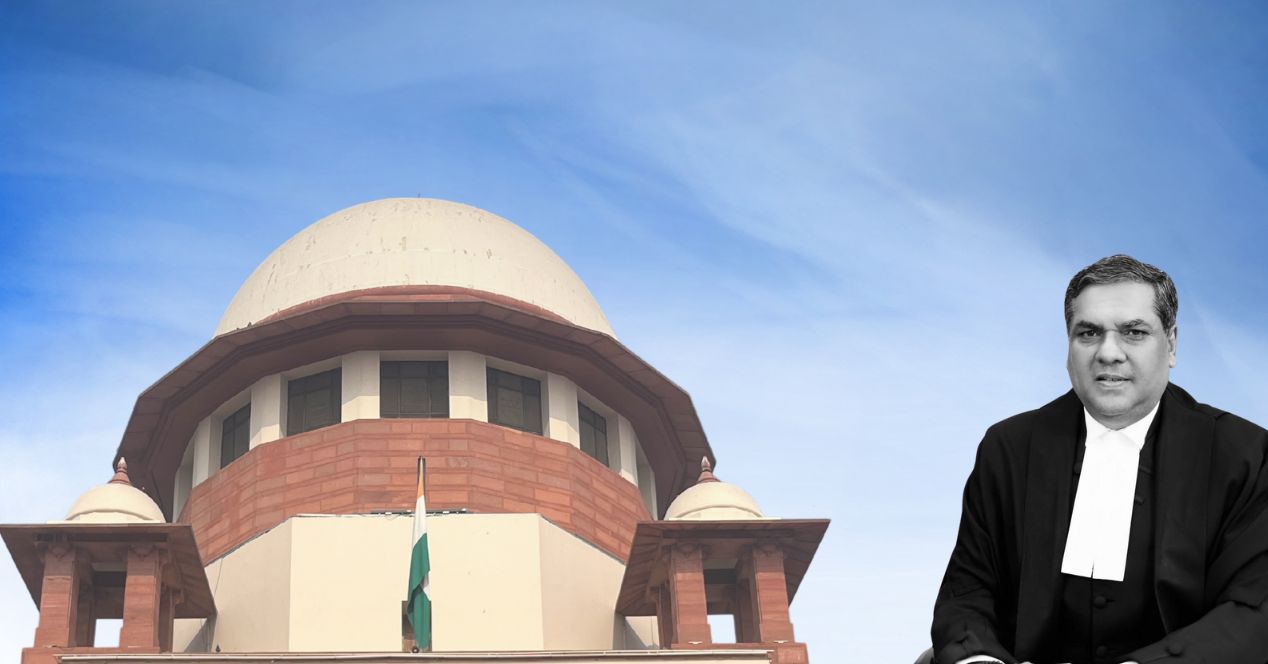Court Data
24 percent of names proposed by Khanna Collegium for HC elevation not cleared by Union
Only six out of 51 recommendations for High Court elevation were women; no woman was proposed for Supreme Court elevation
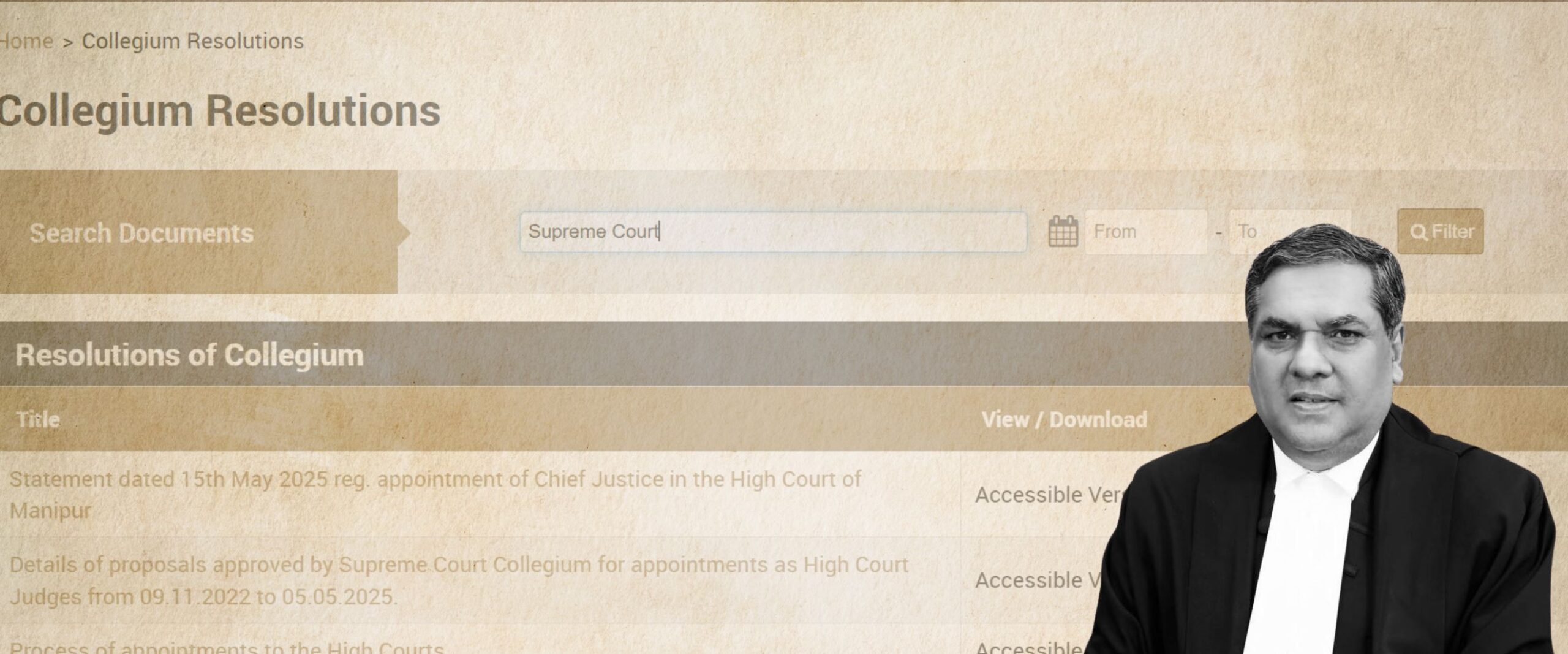
On 13 May 2025, Sanjiv Khanna retired from the Supreme Court after a tenure of six years. He served as India’s 51st Chief Justice for six months from 11 November 2024. As the CJI, he led the Collegium, a body comprising the top court’s seniormost judges for recommending appointments to the higher judiciary. Supreme Court judges are recommended by a panel of five judges, and High Court judges are recommended by three judges.
During CJI Khanna’s tenure, the Collegium changed twice. When he took office, he replaced CJI D.Y. Chandrachud as the seniormost judge. The others in the Collegium were Justices B.R. Gavai, Surya Kant, Hrishikesh Roy and A.S. Oka. On Justice Roy’s retirement on 31 January, Justice Vikram Nath replaced him.
Now, after CJI Khanna’s retirement, the Collegium consists of CJI Gavai with Justices Kant, Oka, Nath and J.K. Maheshwari. Justice Oka is set to retire on 24 May 2025. With this, Justice B.V. Nagarathna will join the Collegium.
The Collegium led by CJI Khanna recommended 57 judges to various High Courts and the Supreme Court. Three were recommended to the top court, three judges were recommended as Chief Justices of High Courts and 51 were recommended as puisne judges of High Courts. The Khanna Collegium recommended six women as High Court judges.
As of 6 May 2025, the Union had notified the appointment of 45 of these 57 judges.
Parent High Court key factor in SC recommendations
In the past, the Collegium has considered factors such as seniority, merit, integrity and diversity in its recommendations. A recent procedure document released by the Court also includes “disposition rate” as a factor for consideration. Disposition rate refers to the number of cases decided, finalised or cleared. The rate is considered in combination with the “quality of judgments, complexity of cases, and court workload.”
When CJI Khanna took over, the strength of the Court was 32, two short of its sanctioned strength of 34. Within two weeks, the Collegium recommended the appointment of Justice Manmohan, with the resolution making it clear that improving the representation of his parent High Court (Delhi) was a key factor in the decision.
Subsequently, two more judges were appointed—Justice K.V. Chandran (January 2025) and Justice Joymalya Bagchi (March 2025). The appointment of Justice Chandran took place right after the retirement of C.T. Ravikumar, whose parent High Court was Kerala.
Significantly, Justice Bagchi’s recommendation stressed that he was in line to become a future Chief Justice if the seniority principle is followed. This revealed another consideration in recommendations. The Collegium noted that Justice Bagchi’s elevation would mean that India will have a Chief Justice from the Calcutta High Court for the first time since 2013. Justice Bagchi is in line to be the CJI in May 2031.
The Khanna Collegium did not recommend any candidates directly from the Bar. In the current cohort, only Justices P.S. Narasimha and K.V. Viswanathan are from the Bar.
While this Collegium favoured regional representation in all three recommendations (by expressly calling out representation of the parent High Court in its resolutions), gender diversity took a hit. No women were recommended to the Bench during CJI Khanna’s tenure. As of now, Justice B.V. Nagarathna remains the only woman judge. She was appointed with Justices Hima Kohli and Bela Trivedi who have since retired.
76 percent acceptance rate for Khanna-led Collegium recommendations
At the start of CJI Khanna’s tenure, there were 352 vacancies across High Courts. The Khanna-led Collegium recommended 51 names for puisne judges. The Union cleared the appointment of 39 judges. The Supreme Court Observer has maintained a count of all judges recommended for High Courts. (A similar methodology was adopted to analyse the Chandrachud Collegium.)
On 6 May 2025, the Collegium released a list of names that were recommended for High Court elevation by the Chandrachud and Khanna Collegiums. The data from that document tallied with the count maintained by us.
The Allahabad High Court, which has historically had the highest number of vacancies among all High Courts (unsurprising given its sanctioned strength of 160), received the most recommendations this time—11. Of these, seven were cleared by the Union government. As of now, the Allahabad High Court has 72 vacancies, six fewer than in November 2024.
The Rajasthan High Court had ten recommendations, of which seven were accepted by the Union. There are currently 12 vacancies in the Rajasthan High Court, compared to 18 when CJI Khanna took over.
Gujarat had eight recommendations and seven appointments.
The High Courts of Calcutta and Patna had five recommendations and three appointments each. During CJI Chandrachud’s tenure, there was only one recommendation to the Calcutta High Court and even that was not accepted by the Union.
All recommendations to the Telangana (4), Jammu and Kashmir and Ladakh (2), Delhi (2), Andhra Pradesh (2), Bombay (1) and Uttarakhand (1) High Courts were accepted.
Notably, the Khanna Collegium recommended judges to only 13 out of 25 High Courts. The Chandrachud Collegium, during its two years, recommended judges to all High Courts except Sikkim, which was at full capacity.
When CJI Khanna took charge, the High Courts of Tripura and Meghalaya had no vacancies. When he stepped down, there was one vacancy in Tripura.
Vacancies in High Courts increased by two during CJI Khanna’s term and now stands at 354 judges.
More Judicial Officers than lawyers recommended despite guideline
Out of the 39 judges appointed during CJI Khanna’s tenure, 27 judges were judicial officers whereas 12 judges were directly elevated from the Bar.
In comparison, CJI Chandrachud’s tenure had an almost 50-50 weightage. The recent document released on the procedure of High Court appointment states that following as a “factor to be taken into consideration”: 66⅔ posts for Members of the Bar and 33⅓ posts for Judicial Officers (from the district judiciary).
However, 100 of the 181 appointments since November 2022 were of judicial officers. If the guideline in the procedure document were to be followed strictly, there should ideally have been more recommendations from the Bar. Admittedly, this is only one factor and there are various others that influence appointments, including the existing bar to judicial officers ratio in a High Court.
In Delhi, Gujarat, Telangana, Andhra Pradesh, Jammu & Kashmir and Ladakh, Manipur, Orissa and Uttarakhand, all appointments were of judicial officers.
Three Chief Justices appointed
The Collegium under CJI Khanna recommended the appointment of three judges as Chief Justices to the High Courts of Manipur, Orissa, Jammu and Kashmir and Ladakh. All recommendations were cleared by the Union government.
No woman was elevated as a Chief Justice. Currently, Justice Sunita Agarwal in Gujarat is the only woman Chief Justice of a High Court in India.
Only six out of 54 recommendations were women
The Khanna-collegium recommended six women as judges of High Courts—three judicial officers and three advocates. Figure 5 shows only those High Courts where women were appointed.
Five out of 25 High Courts had recommendations for the appointment of women. The recommendation that is still pending for acceptance is that of Advocate Sheetal Mirdha in Rajasthan.
All three SC and ST recommendations accepted
The list released on 6 May also contains details about the caste identities of the judges recommended for elevation to High Courts since November 2022. The list contains separate General, OBC and ST categories for ‘Minority’ judges.
The list is the first consolidated official disclosure of the caste status of recommended judges. Previously, a few individual resolutions have mentioned the caste background of judges. For instance, the resolutions recommending the appointments of Justices P.B. Varale and R. Mahadevan noted that they belonged to marginalised groups. The disclosure now confirms a claim that was well- known—most judges appointed to the higher judiciary belong to the upper castes.
The Khanna Collegium recommended the appointment of 31 judges from the General category. Out of this, the DOJ approved the appointment of 24 judges.
Ten judges were recommended from the Other Backward Classes community. Nine were appointed. Sheetal Mirdha, the only woman not appointed from the six recommendations, belongs to the OBC (Woman) community.
The Union appointed half of the names recommended from the General (Minority) community. The recommendations of Md. Talay Masood Siddiqui (Calcutta), Rohenkumar Kundanlal Chudawala (Gujarat) and Baljinder Singh Sandhu (Rajasthan) remain pending.
The single OBC (Minority) recommendation—Abdul Shahid for Allahabad—is yet to be notified.

